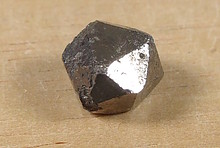Home PageAbout MindatThe Mindat ManualHistory of MindatCopyright StatusWho We AreContact UsAdvertise on Mindat
Donate to MindatCorporate SponsorshipSponsor a PageSponsored PagesMindat AdvertisersAdvertise on Mindat
Learning CenterWhat is a mineral?The most common minerals on earthInformation for EducatorsMindat ArticlesThe ElementsThe Rock H. Currier Digital LibraryGeologic Time
Minerals by PropertiesMinerals by ChemistryAdvanced Locality SearchRandom MineralRandom LocalitySearch by minIDLocalities Near MeSearch ArticlesSearch GlossaryMore Search Options
The Mindat ManualAdd a New PhotoRate PhotosLocality Edit ReportCoordinate Completion ReportAdd Glossary Item
Mining CompaniesStatisticsUsersMineral MuseumsClubs & OrganizationsMineral Shows & EventsThe Mindat DirectoryDevice SettingsThe Mineral Quiz
Photo SearchPhoto GalleriesSearch by ColorNew Photos TodayNew Photos YesterdayMembers' Photo GalleriesPast Photo of the Day GalleryPhotography
╳Discussions
💬 Home🔎 Search📅 LatestGroups
EducationOpen discussion area.Fakes & FraudsOpen discussion area.Field CollectingOpen discussion area.FossilsOpen discussion area.Gems and GemologyOpen discussion area.GeneralOpen discussion area.How to ContributeOpen discussion area.Identity HelpOpen discussion area.Improving Mindat.orgOpen discussion area.LocalitiesOpen discussion area.Lost and Stolen SpecimensOpen discussion area.MarketplaceOpen discussion area.MeteoritesOpen discussion area.Mindat ProductsOpen discussion area.Mineral ExchangesOpen discussion area.Mineral PhotographyOpen discussion area.Mineral ShowsOpen discussion area.Mineralogical ClassificationOpen discussion area.Mineralogy CourseOpen discussion area.MineralsOpen discussion area.Minerals and MuseumsOpen discussion area.PhotosOpen discussion area.Techniques for CollectorsOpen discussion area.The Rock H. Currier Digital LibraryOpen discussion area.UV MineralsOpen discussion area.Recent Images in Discussions
Improving Mindat.orgFossa Felci, Aeolian Islands

23rd Aug 2005 10:08 UTCmarco barsanti
Fossa Felci, Filicudi, Eolie Islands (Aeolian Islands), Lipari, Messina Province, Sicily, Italy
Fossa delle Felci, Filicudi, Eolie Islands (Aeolian Islands), Lipari, Messina Province, Sicily, Italy
the first one, Fossa Felci, should be deleted
thanks,
Marco

23rd Aug 2005 10:54 UTCcristian
I have a question. In the entry cited by Marco are listed probably only rock forming minerals typical of magmatic rocks of Aeolian arc. Is it useful to add this kind of minerals on mindat? Minerals listed in the two entry are common rock forming minerals so we could cite an infinite number of localities where it is possible to collect these phases. Ok, they are minerals, but probably they don't show any significant mineralogical feature.
It would be different if a rock forming mineral is a rare mineral such as coesite, a polymorph of SiO2 found in eclogites in Dora-Maira massif (Alps); then I think it is useful to add it on mindat. Adding rock forming minerals is correct if it complete the geological framework of an area, describing the kind of rocks embedding a particular mineralization.
What do you think?
ciao
Cristian

23rd Aug 2005 11:38 UTCDanny
Just a quick question... am off to Lipari at the start of October.. is there still any collecting to be had anywhere? Having spent a year on the Johnston-Lavis collection it will at least be good to see some of the localities he visited. Talking of which the exhibition i mentioned opens in October and i shall post more details, as well as info on the collection, as soon as i get them,
Cheers,
Danny.

24th Aug 2005 07:08 UTCPierre PELISSON
I am sorry, but no, the two localities are absolutely independent (two different islands) :
Fossa Felci, Filicudi, Eolie Islands (Aeolian Islands), Lipari, Messina Province, Sicily, Italy
Fossa delle Felci, Salina, Eolie Islands (Aeolian Islands), Lipari, Messina Province, Sicily, Italy
Pierre.

24th Aug 2005 07:27 UTCmarco barsanti
One more question; the minerals listed there, as Christian say, are only rock forming ones, which identify only a particular kind of lava or some particular differentiation, or are there also vugs with well formed crystals?
Marco

24th Aug 2005 09:04 UTCmarco barsanti
For Filicudi island, the right term to be entered is “Fossa delle Felci” which is, as you could expect, one of the volcanic structures formed in Pleistocene which can still be recognized: (Fossa delle Felci, Filo di Sciacca, Zucco Grande, Monte Terrione, La Montagnola and also Capo Graziano).
see this link
http://www.esemar.net/Filicudi/FossaDelleFelci.htm
About Salina Island, the right term is very similar, “Monte Fossa delle Felci” (more than 900 m), and it is one of the volcanoes which contributed to form the island with others as Pizzo di Corvo , Monte Rivi, Monte dei Porri, and Pollara Crater (these last 2 were active after Wurm period).
see this one
http://www.esemar.net/Salina/MonteFossaDelleFelci.htm
“Fossa” could mean “pit” or “deep” or also “trench” while “Felci” are plants, “ferns” which easily colonize that areas, even if usually there is few water resources in the islands, (only Salina can show a “richness” of vegetation in spite of the other islands)
Ciao
Marco B.

24th Aug 2005 10:19 UTCPierre PELISSON
As it generally happens, the most differenciated terms (high-K andesites) will show micro-vugs with rock-forming species crystals and probabely also late phases (fumarollic, hydrothermal).
The problem is that the original article had a rather "geochemistry/vulcanology" orientation and consequently the actual mineralogy is still an open subject for study...
I mean part of the "biotite" might well be montdorite or annite ; there are probably half a dozen oxides present, beside "magnetite" ; "hornblende" might well be something much more interesting, etc.
Always the same song !!!
Pierre.

24th Aug 2005 11:11 UTCmarco barsanti
this could be an occasion to justify an Aeolian Island holyday!!!! :)
marco




Mindat.org is an outreach project of the Hudson Institute of Mineralogy, a 501(c)(3) not-for-profit organization.
Copyright © mindat.org and the Hudson Institute of Mineralogy 1993-2024, except where stated. Most political location boundaries are © OpenStreetMap contributors. Mindat.org relies on the contributions of thousands of members and supporters. Founded in 2000 by Jolyon Ralph.
Privacy Policy - Terms & Conditions - Contact Us / DMCA issues - Report a bug/vulnerability Current server date and time: April 27, 2024 03:44:10
Copyright © mindat.org and the Hudson Institute of Mineralogy 1993-2024, except where stated. Most political location boundaries are © OpenStreetMap contributors. Mindat.org relies on the contributions of thousands of members and supporters. Founded in 2000 by Jolyon Ralph.
Privacy Policy - Terms & Conditions - Contact Us / DMCA issues - Report a bug/vulnerability Current server date and time: April 27, 2024 03:44:10











